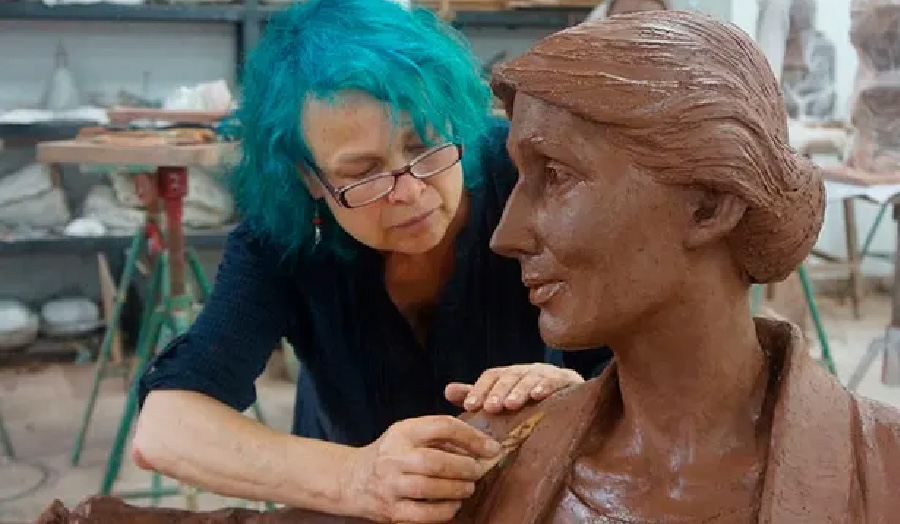Virginia Woolf’s statue was unveiled on the spot where she walked her dog every day, alongside the river in Richmond.
The first full-size bronze statue of Virginia Woolf was unveiled on Wednesday, a long side of the riverside at Richmond-upon-Thames, where the iconic author set up Hogarth Press in the early 1900s.
After a five-year funding campaign, a sculpture of Virginia Woolf sitting on a park bench is now permanently placed next to the river where she lived, walked, sat looking out at the water, and worked from 1914-1924. (Hogarth Press published hundreds of titles, among them, works by Woolf, Katherine Mansfield and T S Eliot).


The sculpture can be found sitting on a bench with a book in hand, and smiling. And yes, selfies are encouraged.
Sculptor Laury Dizengremel told The Guardian. “There are so few women represented in sculpture. I find it quite remarkable that [Woolf] will be situated where so many people will walk past, where so many women and girls will be inspired. It’s going to get rubbed raw and once in a while it will need to get re-patinated—big deal.”
The statue is the result of a campaign successfully funded by the public, despite some concerns that the riverside site was inappropriate, given the nature of Woolf’s death (Woolf drowned herself by filling her overcoat pockets with stones and walked into the River Ouse on March 28, 1941) Locals, however, voted overwhelmingly in favour of the sculpture, which captures Woolf in a peaceful moment.
Primary fundraiser Cheryl Robson shared with the Guardian.“It has raised a few eyebrows because we’ve got her gently smiling and enjoying her day, which goes against the stereotype of her being an anguished artist,” “There’s a bust of Woolf in Tavistock Square that depicts her as an anguished tortured genius. She hated that bust, so it’s pretty awful that’s the thing that has come to represent her after her death—it’s so stereotypical of the idea that the only way a woman can be a genius is if she’s mentally ill. So we’re challenging that trope. If you read her diaries, every day she walked her dog along the river in Richmond and sat and enjoyed the view. So it’s true to history, and I think people have enjoyed the idea that they can sit next to her.”


